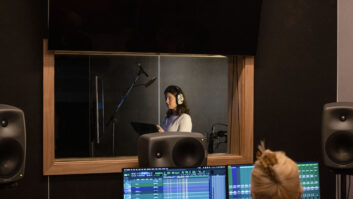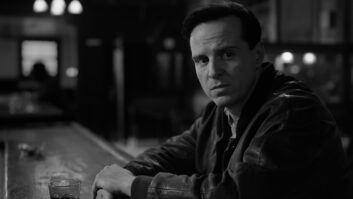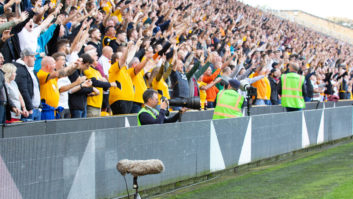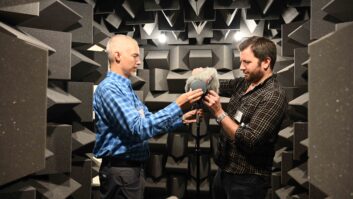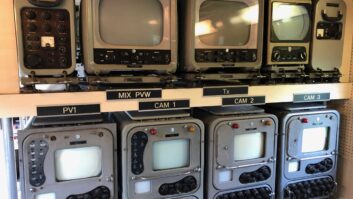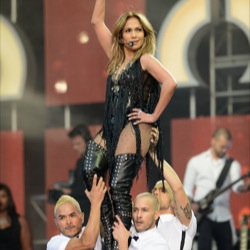
An extraordinary celebrity line-up, a good cause, four stages and nearly one billion viewers watching from home: Erica Basnicki finds out how The Sound of Change went from live to on-air at Twickenham Stadium.
An amazing line-up of stars and celebrity presenters – including Beyoncé (and a surprise appearance by hubby Jay-Z for Crazy in Love), Jessie J, Jennifer Lopez, Madonna and Timbaland – assembled at London’s Twickenham Stadium for The Sound of Change concert on 1 June.
The concert was a focal point for the Chime for Change campaign, founded by Gucci’s designer Frida Giannini, Beyoncé and Salma Hayek, which aims to improve education, health and justice for women around the world. The show raised over £2.6 million (€3 million) to fund approximately 200 projects in 70 countries.
It was also broadcast live to 150 countries worldwide “but in my head, no one’s listening to it but me” said Red TX director Tim Summerhayes just a few hours before the event. The company was commissioned by Splinter Films to handle the broadcast audio for the concert, which featured one of the tightest technical schedules many involved had ever had to work to, with as little as six minutes changeover time between artists performing on four different stages.
“It’s a complex show, but we’ve tried to keep it as simple as we can so if anything does go a bit sideways it’s not impossible to get in and sort out the mess. There’s various spares and contingencies … but God forbid we ever have to go to them,” he laughed.
In order to cope with the technicalities of the show, (which, once over, Summerhayes said “ran like clockwork”) Red TX deployed both its Red I and Red II trucks on site – relatively speaking; the trucks themselves were over a kilometre away from the stage – and a crew of seven. Summerhayes, his son Ben Summerhayes and Mike Silverston were on board Red I mixing stages A and B; Ian Dyckhoff, Huub Lelieveld and Rohan Igoe were on board Red II mixing stages C and D and Christian Postna acted as back up between the two trucks.
In total, 128 channels of audio were recorded using Merging Technologies’ Pyramix, with Cockos’ Reaper used as multi-track backup. Both Red I and Red II are equipped with a Studer Vista 8 digital consoles, and PMC AML1 monitors.
Sub mixes from each music mix truck were fed to Gary Moore from NEP Visions, who mixed the final presentation audio inside the company’s Atlantic truck, the UK’s first fully integrated 1080p 3G-capable OB vehicle: “It’s the pride of our fleet and our latest truck – it’s rather funky,” said NEP Visions’ Brian Clark.
The Atlantic centres around an Evertz EQX Magnum 488×800 router to distribute both audio and video throughout the 79sqm truck, with a 56-fader Calrec Apollo console and Genelec monitors handling audio duties.
Moore also submixed the 24 audience mics and distributed this to himself and the two music mix trucks “to make it sound absolutely huge, and it does,” added Summerhayes.
The broadcast is the thing
Red TX also worked closely with Britannia Row, which handled live sound for the event: “Britannia Row and Visions are companies we know and trust as we have worked with them on many occasions in the past,” said Summerhayes. “I was particularly impressed with Britannia Row and have no idea how they held it all together. Every detail was worked out in advance with military precision – even down to having all the vocal mics and radio packs individually labeled for each artist so that nothing was left to chance.”
Veteran sound designer Derrick Zieba, audio crew chief at The Sound of Change, says it’s down to a process that he and Britannia Row have been developing over more than 20 years, building on their experience of providing audio for the BRIT Awards, Classic BRIT Awards, MTV Awards and other multi-artist events broadcast live to air.
“We’ve always worked on the basis that – despite the fact that Brit Row is a world-renowned live company – the broadcast is the important thing,” said Zieba. “We’re producing sound for around 55,000 people watching the show – but we’re not. We’re producing sound for over a billion people watching in 150 countries. At the end of the day, there are only a certain number of people who would’ve been here who will go home and say ‘that sounded great’. That all counts for nought if everybody sitting at home thinks ‘that doesn’t sound very good.’”
If backing the cause of female empowerment didn’t reach a UK audience as much as Goldsmith had hoped, the message behind The Sound of Change certainly wasn’t lost on the crew who made it happen. Reflecting on the event, Summerhayes concluded:
“Politically, I think it’s a shame that we still need to raise awareness of the plight of women from certain cultures around the world. Men and women may be different but neither one is superior and the vast majority of tasks and skills can be filled by either. Unfortunately, certain cultures around the word still consider women to be inferior and in my view they are absolutely wrong. If a concert like The Sound of Change can help raise the awareness and improve life for women in countries where they are still regarded as second rate citizens, then all the better.”
www.chimeforchange.org
www.red-tx.com
